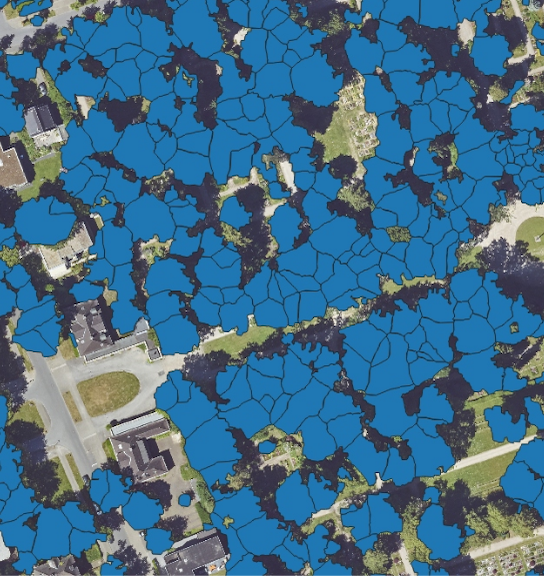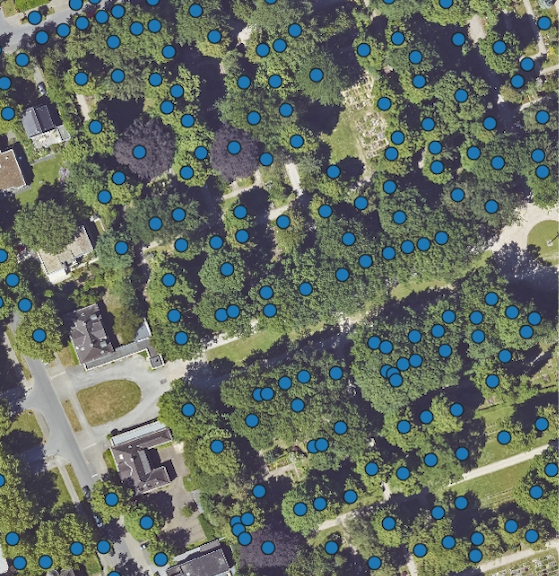Knowledge of the locations of individual trees and the development of the tree population is an important basis for various issues relating to green infrastructure, spatial observation and climate. Such information was previously only sporadically and incompletely available in the Ruhr metropolis, for example in the form of municipal tree registers. For an area-wide approach, an automated detection of individual tree locations from remote sensing data using a machine learning (ML) approach was developed as part of the project for the Ruhr Regional Association (RVR).


